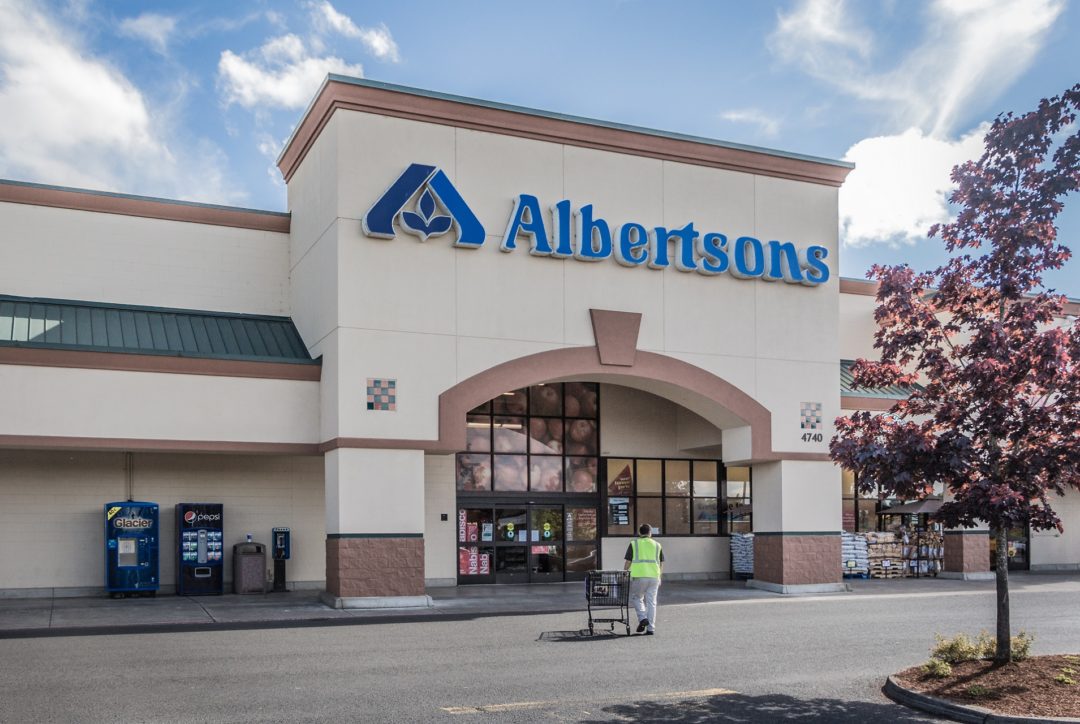
Albertsons E-commerce Success While Investors Skeptical of Rite Aid Merger

According to Food Dive, Albertsons’ net sales are up 1% to $18.7 million. Same-store sales are up .2% and expected to hover between 1.5% and 2% for the rest of fiscal 2018. A report from the Idaho Statesman newspaper claims that same-store sales figures are based only on sales at stores that have been open for at least one year. Apparently, “increased fuel sales of $154.1 million accounted for most of the increase” in same-store sales. Gasoline is available at almost 400 Albertsons locations.
Most impressively, the Idaho-based company reported a 108% increase in e-commerce sales during the first quarter of 2018, emblematic of Albertsons’ progress with store pickup services, home delivery, and meal kit company Plated. Company executives state that Albertsons plans on expanding Drive Up & Go, its click-and-collect service, which they hope to bring to several hundred locations by the end of the year.
At the earning’s call, Albertsons president Jim Donald stressed the company’s focus on expanding these e-commerce platforms, lowering its pre-existing debt, and updating loyalty initiative programs.
“It’s a continuation of all the things we’re doing,” he said.
Albertsons also reported that its private brands have been selling at an all-time high, now making up 24% of total sales. The company expects its private brand sales to gain momentum as they continue to focus on their natural and organic lines (O Organics and Open Nature).
While Albertsons is profiting greatly from e-commerce endeavors and its private brand offerings, opposition toward the company’s planned merger with Rite Aid has been growing. To combat the heat, Albertsons executives have been boasting the potential benefits of the deal. They claim that the merger would allow the company to establish itself in key markets, and therefore have more sources of income. Executives also promised that the Rite Aid merger would be less “operationally complex” then the Albertsons-Safeway merger.
Food Dive reports that Albertsons CEO, Bob Miller, “noted that the retailer's pharmacy customers spend 3.5 times as much with the company per transaction compared to regular customers, and that the merger would result in an estimated $375 million in annual run-rate synergies over three years.”
Executives and merger-supporters theorize that the joint forces of Albertsons-Rite Aid could result in “significant cost savings and sales benefits.” However, there is a common belief that if the integration process doe not go smoothly, the companies could face detrimental losses.
This is, in part, due to Albertsons remaining debt and the stiff corporate competition posed by other players in the market. Massive companies like Amazon, Walmart, and Kroger are all evolving and breaking barriers in various industries. Therefore, Albertsons will need to work hard in order to grow and thrive in today’s competitive climate.
The merger with Rite Aid comes up for a shareholder vote next month, and is expected to close this year.

The editorial team at WholeFoods Magazine has decades of experiences reporting on natural products industry news, trends, and more. This national, monthly business-to-business magazine has been published continuously for nearly 40 years (the magazine was founded in 1977, and has been owned by Wainer Finest Communications since 1984). It is the longest-tenured media outlet of its kind in the natural products industry. The editorial focus at WholeFoods Magazine is, and always has been, on informing and educating members of the natural products industry.
The Magazine
Information
About Us
NOTE: WholeFoods Magazine is a business-to-business publication. Information on this site should not be considered medical advice or a way to diagnose or treat any disease or illness. Always seek the advice of a medical professional before making lifestyle changes, including taking a dietary supplement. The opinions expressed by contributors and experts quoted in articles are not necessarily those of the publisher or editors of WholeFoods.







